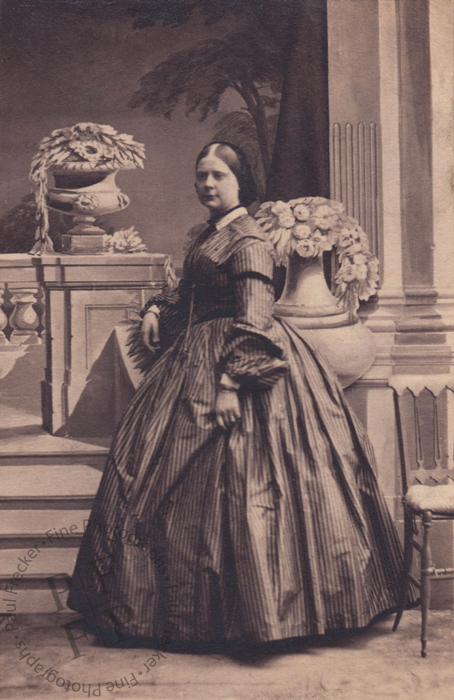An unidentified sitter
The Silvy daybooks were compiled partly as an aide-memoire for Silvy and his staff but also as a system for locating the original glass negatives when clients wished to reorder a portrait. Prior to the closure of his studio in 1868, Silvy ran a series of advertisements in the press announcing that all glass negatives would soon be destroyed but for a limited time were still availabe for former clients to purchase. However, when the studio finally closed its doors, the negatives were not destroyed but were instead transferred to the Regent Street studio of Silvy's erstwhile assistant Adolphe Beau, who for a time ran his own advertisments informing Silvy's former clients where they could reorder their portraits. Since the daybooks were indispensible in locating the negatives they almost certainly went with the negatives, some seventeen thousand of them, to Adolphe Beau's studio.
Beau remained in London all his life, dying at Dulwich in South London in 1910. Towards the end of his life, he sold the daybooks to a dealer named Charles Albert Eskell van Noorden, who in turn sold them to the National Portrait Gallery in 1904 for the sum of £60. At some point between 1868 and 1904 the eleventh volume, covering the period July 1863 to June 1864, was lost.
At another point in the history of the daybooks, sittings number 100 to 300 were excised from Volume 1. A little over a third of these were the series of theatrical portraits that Silvy and Beau created together in the spring of 1860. These portraits subsequently resurfaced, floated off their original mounts, in the collection of portraits of actors and actresses assembled by the solicitor Guy Tristram Little (1868-1952) and are now part of the photography collection at the Victoria and Albert Museum. The names of the sitters and the original sitting numbers of these theatrical portraits, roughly 125 of them, are preserved in a Silvy catalogue held at the NPG, but no record exists of the non-theatrical sittings, some 175 of them, which took place in the spring of 1860 in between the sittings with stars of the stage.
Stylistically, one would expect this portrait to appear in Volume 1 but it is not there. It is probably the result of one of the lost sittings with a paying member of the public that occurred between sitting number 100 and sitting number 300.

